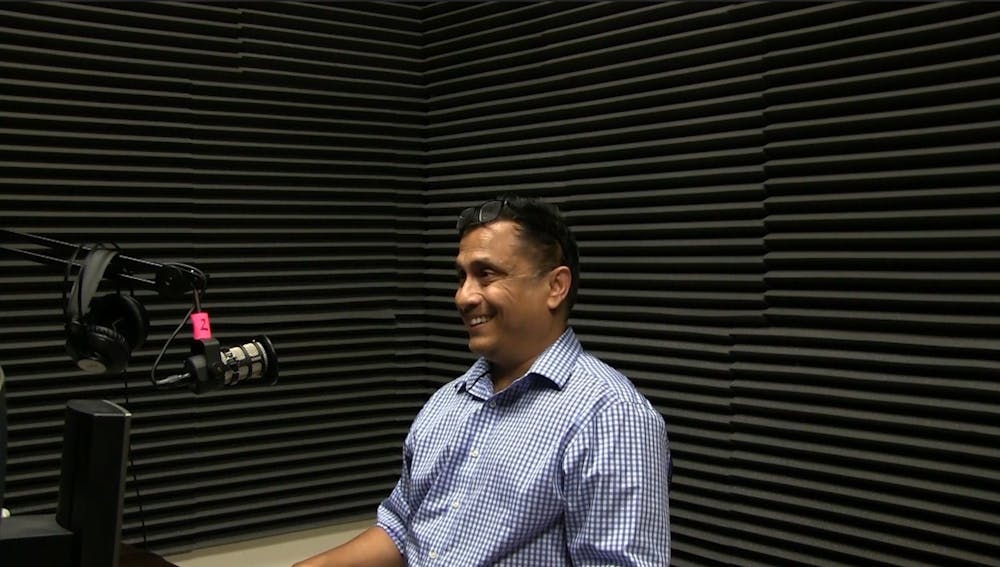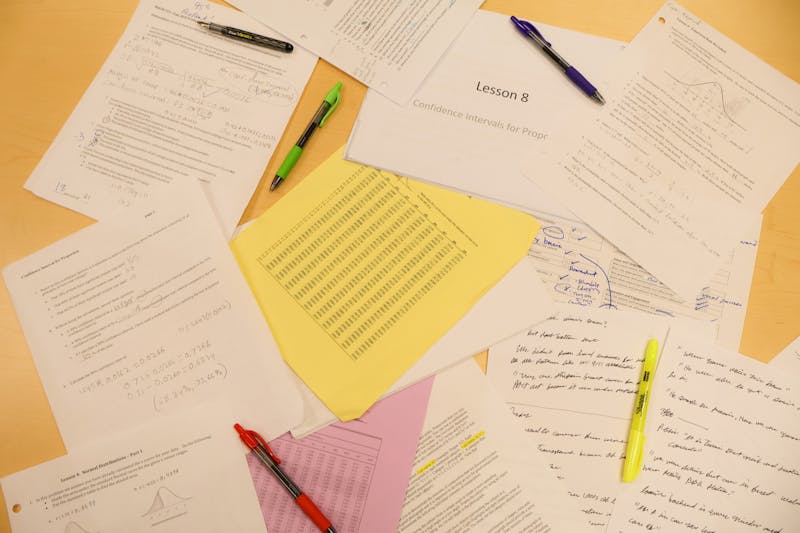The adults in the room were nervous. Everyone seemed to be treating the New Year’s Eve party normally, though there was palpable tension in the room. Even young children were aware that something was off. Television shows had made parodies of it; morning radio programs at the bus stop discussed it.
Y2K — the unfounded belief that computer systems would crash and the world would be subsequently thrown into chaos — had descended over 1999 America.
It is now 2025, and similar fear lingers and drives the same tense atmosphere that existed decades ago. But instead of it being an unfounded belief that computers could not handle the calendar rolling over to 2000, it is mass joblessness and human obsolescence in the face of generative artificial intelligence.
Shippensburg University Communication, Journalism and Media Professor and Ethnic Studies Director Dhiman Chattopadhyay, Ph.D., notices the similarities between the two moments in time.
Chattopadhyay, who prefers his students to refer to him as D.C., remembers coming up as a journalist alongside the internet, and he is not ready to sound the alarm in the face of another tech hysteria.
“There was a lot of talk and a lot of confusion back then about what [the internet] would do,” D.C. recalls.
Today he sees that confusion again. “Whether generative media is going to destroy, that [is] the fear as well.”
So, if the rapid growth of technology does not destroy, what does it do? As might be assumed for someone who was an earlier adopter of the internet, D.C. sees its potential with enthusiasm.
“I don’t believe it destroys anything,” D.C. said. “It disrupts, and disruption is not necessarily always a bad thing.”
His colleagues, like many students and professionals now, did not agree.
“I remember many of my colleagues ... telling me the internet is going to kill journalism because people are going to stop going out and interviewing people and just Google everything,” said D.C. “They thought this was a passing fad; this would not last. Sure, a lot of platforms on the World Wide Web have been passing fads — nobody talks about Vine or Flickr anymore — but there are new kings in that place.”
What does D.C. conclude is the lesson to take away from those ready to prematurely bury journalism or other industries? It is too soon.
“Journalism did not die in 1996. People had told me journalism is dying. It’s still not dead,” said D.C.
That does not mean the media business has not taken its lumps. Newspapers and broadcast channels depend on advertising dollars that disproportionally go to search engines and social media platforms. The lack of financing has run roughshod through the industry.
According to a University of North Carolina study cited by The Wall Street Journal, “Nearly 1,800 newspapers closed between 2004 and 2018, leaving 200 counties with no newspaper and roughly half the counties in the country with only one.”
D.C. does not believe technology is entirely to blame for these numbers. He believes it is a lack of support for local news organizations that became more prominent early in the internet age, when consumers were loath to start paying for things they were originally getting for free. This affected some more than others.
“Local newspapers are the most hurt because they don’t have the funding backup of the New York Times, much like Harvard is hurt, but not as much as a local regional university would be by a lack of funding,” said D.C.
But for every door that closes, a window opens. The internet has vastly improved the quality and variety of journalism that organizations were able to publish, and AI can similarly aid the field.
D.C. remembers being an editor who had to assign young reporters to monotonous jobs like transcribing news releases and long government reports. Now, an editor can feed those to AI, which can summarize them in seconds.
“It frees up my 45 minutes to go chase that investigative story where I needed that code from that person who is proving to be elusive, or write that story in a more rigorous manner because my seven o’clock deadline or my eight o’clock deadline doesn’t change,” D.C. said.“I have an extra hour to work on that story because this work, which is pretty template work, is being looked after by a generative AI.”
While previous advances in technology like the internet expanded how media is produced and consumed, it also came with consequences, including misinformation that often spreads on social media.
But those downsides may be more of a reflection of the humans behind the technology, according to D.C.
“At the bottom, at the foundational level, of course, you have to remain ethical, mindful, about the dangers of anything, whether it’s technology or humans,” D.C said. “Much like atomic energy, it can change positively the lives of millions of people … or it can kill millions of people if that same atomic energy is used to make a bomb.”
The same responsibility and introspection are required in how journalists handle AI.
D.C. concluded saying: “As long as we are mindful, as long as we are ethical in our work as journalists, I see generative AI being used for a lot of good.”



The Slate welcomes thoughtful discussion on all of our stories, but please keep comments civil and on-topic. Read our full guidelines here.